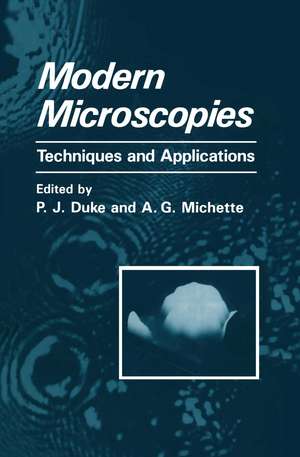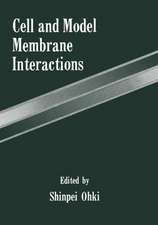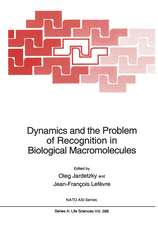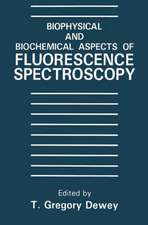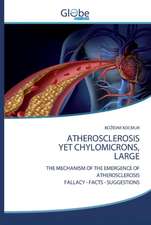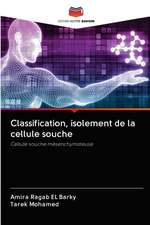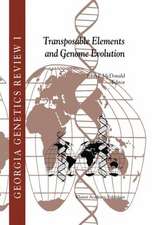Modern Microscopies: Techniques and Applications
Editat de P.J. Duke, A.G. Michetteen Limba Engleză Hardback – 29 apr 1990
| Toate formatele și edițiile | Preț | Express |
|---|---|---|
| Paperback (1) | 938.34 lei 6-8 săpt. | |
| Springer Us – 18 oct 2011 | 938.34 lei 6-8 săpt. | |
| Hardback (1) | 952.09 lei 6-8 săpt. | |
| Springer Us – 29 apr 1990 | 952.09 lei 6-8 săpt. |
Preț: 952.09 lei
Preț vechi: 1161.08 lei
-18% Nou
Puncte Express: 1428
Preț estimativ în valută:
182.21€ • 189.52$ • 150.42£
182.21€ • 189.52$ • 150.42£
Carte tipărită la comandă
Livrare economică 14-28 aprilie
Preluare comenzi: 021 569.72.76
Specificații
ISBN-13: 9780306432880
ISBN-10: 0306432889
Pagini: 272
Ilustrații: XIV, 272 p. 114 illus., 2 illus. in color.
Dimensiuni: 152 x 229 x 23 mm
Greutate: 0.64 kg
Ediția:1990
Editura: Springer Us
Colecția Springer
Locul publicării:New York, NY, United States
ISBN-10: 0306432889
Pagini: 272
Ilustrații: XIV, 272 p. 114 illus., 2 illus. in color.
Dimensiuni: 152 x 229 x 23 mm
Greutate: 0.64 kg
Ediția:1990
Editura: Springer Us
Colecția Springer
Locul publicării:New York, NY, United States
Public țintă
ResearchDescriere
For several decades the electron microscope has been the instrument of choice for the examination of biological structures at high resolution. Biologists have be come familiar with the techniques and pitfalls of sample preparation and with the interpretation of the images obtained. The purpose of this book is to introduce the biologist to a number of new imaging techniques that are now becoming avail able to supplement and even extend the information that can be obtained from the now-traditional electron microscope. Some of these techniques are still at the experimental stage, while others, such as cryoelectron microscopy and confocal optical microscopy, are at advanced stages of development and are already avail able commercially. This book represents a first attempt to quantify the progress made by bring ing together, in one volume, an account of the technical bases and the future potentials of the various techniques. Although the content is primarily aimed at biologists, microscopists in other fields should also find the information of interest and use. All the chapters are written by leading experts who are at the forefront of these exciting developments. About half the book is concerned with x-ray microscopy; the editors make no apology for this since they are both intimately involved with developments associated with this field and therefore view it, perhaps with bias, as being of the utmost importance.
Cuprins
1. Modern Microscopy.- 1.1. Introduction.- 1.2. Cryoelectron Microscopy.- 1.3. X-Ray Microscopy.- 1.4. Imaging by Magnetic Resonance Techniques.- 1.5. Confocal Optical Microscopy.- 1.6. Acoustic Microscopy.- 1.7. Scanning Tunnelling Microscopy.- 1.8. Summary.- References.- 2. Electron Microscopy of Biological Macromolecules: Frozen Hydrated Methods and Computer Image Processing.- 2.1. Introduction.- 2.2. Levels of Structure in Biological Material.- 2.3. Image Processing.- 2.3.1. Filtering.- 2.3.2. Regular Two-Dimensional Objects.- 2.3.3. Superposition Effects.- 2.3.4. Contrast Transfer Functions.- 2.3.5. Objects with Rotational Symmetry.- 2.3.6. Helical Objects.- 2.3.7. Three-Dimensional Reconstruction.- 2.3.8. Correction of Image Defects.- 2.4. Examination of Frozen Hydrated Material.- 2.4.1. Sample Preparation.- 2.4.2. Virus Particles.- 2.4.3. Crystals.- 2.4.4. Cytoskeletal and Other Cellular Components.- 2.4.5. Problems of Interpretation.- 2.4.6. Radiation Damage.- 2.5. Conclusions.- References.- 3. Radiation Sources for X-Ray Microscopy.- 3.1. Introduction.- 3.2. Electron-Impact Sources.- 3.3. Synchrotron Radiation.- 3.4. Plasma Sources.- 3.5. Microfocus Sources.- 3.6. Choice of Source.- References.- 4. Amplitude and Phase Contrast in X-Ray Microscopy.- 4.1. Introduction.- 4.2. Amplitude and Phase Contrast.- 4.3. Radiation Dosage.- 4.4. Results.- References.- 5. Scanning X-Ray Microscopy.- 5.1. Introduction.- 5.2. X-Ray Optics.- 5.2.1. Status of Zone Plate Optics.- 5.2.2. Source Requirements: Coherence and Brilliance.- 5.3. X-Ray Sources.- 5.4. Scanning X-Ray Microscopes at Synchrotron Sources s.- 5.4.1. The King’s College Microscope at Daresbury.- 5.4.2. The Stony Brook/NSLS Scanning Microscope at Brookhaven.- 5.4.3. The Gottingen Scanning Microscope at BESSY.- 5.5. Summary and Future Work.- References.- 6. X-Ray Microradiography and Shadow Projection X-Ray Microscopy.- 6.1. Introduction.- 6.2. X-Ray Sources.- 6.3. X-Ray Detectors.- 6.4. X-Ray Microradiography.- 6.5. Shadow Projection Microscopy.- 6.5.1. Thin-Film Targets.- 6.5.2. Real-Time Imaging and Image Processing.- 6.6. Conclusions.- References.- 7. Progress and Prospects in Soft X-Ray Holographic Microscopy.- 7.1. Introduction.- 7.2. The New Technologies.- 7.3. X-Ray Holographic Experiments at the NSLS.- 7.4. Three-Dimensional Imaging.- 7.5. Diffraction Tomography.- 7.6. Future Developments.- References.- 8. Prospects for NMR Microscopy.- 8.1. The Development of Nuclear Magnetic Resonance Imaging.- 8.2. The Dependence of Image Quality on Spatial Resolution and Tissue Contrast: The Biological Basis of Tissue Characterization.- 8.3. Clinical Value of Tissue Characterization by NMR.- 8.4. Cine-NMR for Cardiac Imaging.- 8.5. NMR Angiography.- 8.6. Magnetic Resonance Imaging of Free Radicals and Oxygen Concentration.- 8.7. NMR Microscopy.- References.- 9. NMR Microscopy of Plants.- 9.1. Introduction.- 9.2. Experimental.- 9.3. Results and Discussion.- 9.4. Conclusions.- References.- 10. Confocal Optical Microscopy.- 10.1. Introduction.- 10.2. Basic Principles.- 10.3. The Principle of the Confocal Microscope.- 10.4. Multiple-Aperture Array (Tandem) Scanning Microscopes.- 10.5. Single-Beam (Laser) Confocal Scanning Microscopes.- 10.6. Results and Applications.- 10.6.1. Surface Imaging.- 10.6.2. Extended-Focus or Range Images.- 10.6.3. Stereo Imaging.- 10.6.4. Stereology.- 10.6.5. Image Processing.- 10.6.6. Fluorescence.- 10.7. Comparisons.- References.- 11. Acoustic Microscopy in Biology: An Engineer’s Viewpoint.- 11.1. Scope.- 11.2. Basic Physics of Ultrasound.- 11.2.1. Velocity.- 11.2.2. Acoustic Impedance.- 11.3. History.- 11.4. Instrumentation and Operation.- 11.4.1. The Acoustic Lens.- 11.4.2. Electronics, Scanning, and Image Display.- 11.4.3. Resolution.- 11.4.4. When is an Acoustic Microscope Not a Microscope?.- 11.5. Application to Soft Tissue.- 11.5.1. “Real-Time” Biopsy.- 11.5.2. Optical Microscopy and Medical Ultrasonics.- 11.5.3. Cell Attachment and Examination of Living Cells.- 11.5.4. Nonlinear Effects.- 11.6. Applications to Demineralization.- 11.7. Conclusion and the Future.- References.- 12. Scanning Tunnelling Microscopy.- 12.1. Introduction.- 12.2. Outline of Scanning Tunnelling Microscopy.- 12.3. Theory.- 12.4. Equipment and Instrumentation.- 12.5. Tip and Sample Preparation.- 12.6. STM of Organic Macromolecules.- 12.6.1. Introduction.- 12.6.2. Insulating Molecules: Contact and Substrate Effects.- 12.6.3. Semiinsulating and Conducting Molecules.- 12.7. Conclusions.- References.- 13. Resolution: A Biological Perspective.- 13.1. Overview.- 13.2. Introduction.- 13.3. Biological Structural Problems.- 13.4. Location of Specific Elements.- 13.5. Areas of Structural Biology Where New Techniques Might be Helpful.- 13.5.1. Living Systems.- 13.5.2. Dynamic Processes.- 13.5.3. Location of Selected Elements.- 13.5.4. Structure of Large Molecules at Atomic Resolution.- 13.5.5. Thick Specimens.- 13.6. Conclusions.- References.
